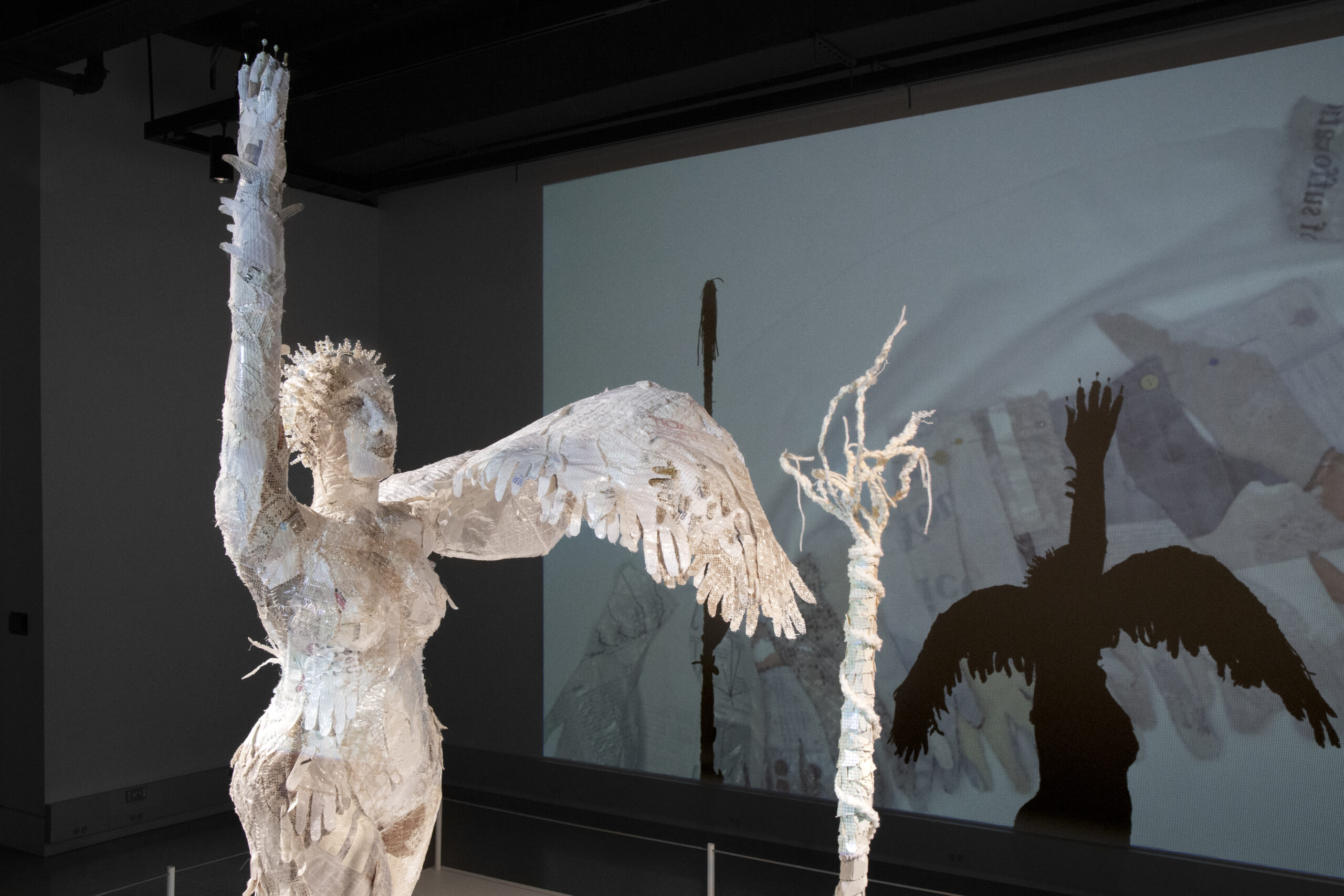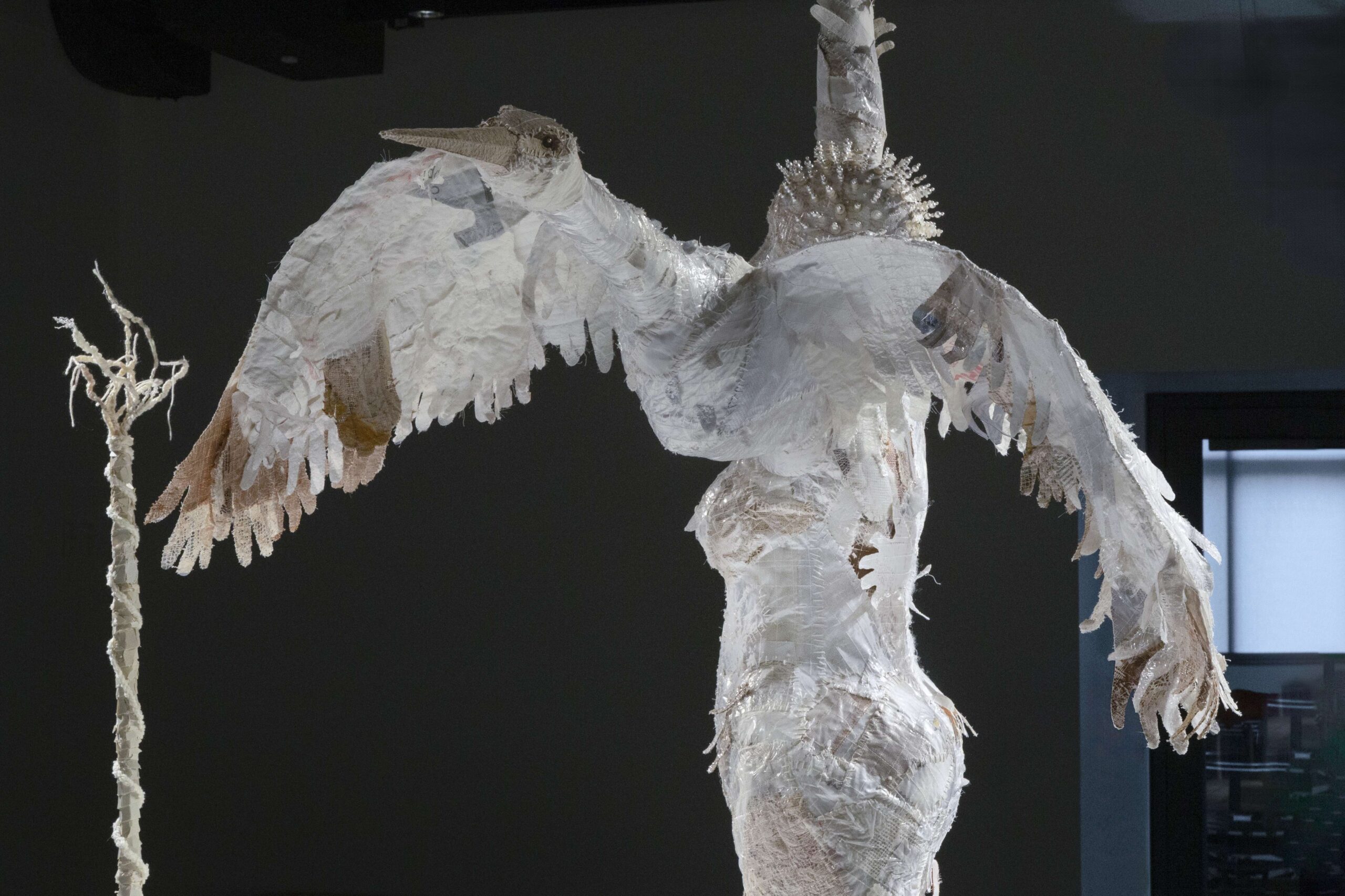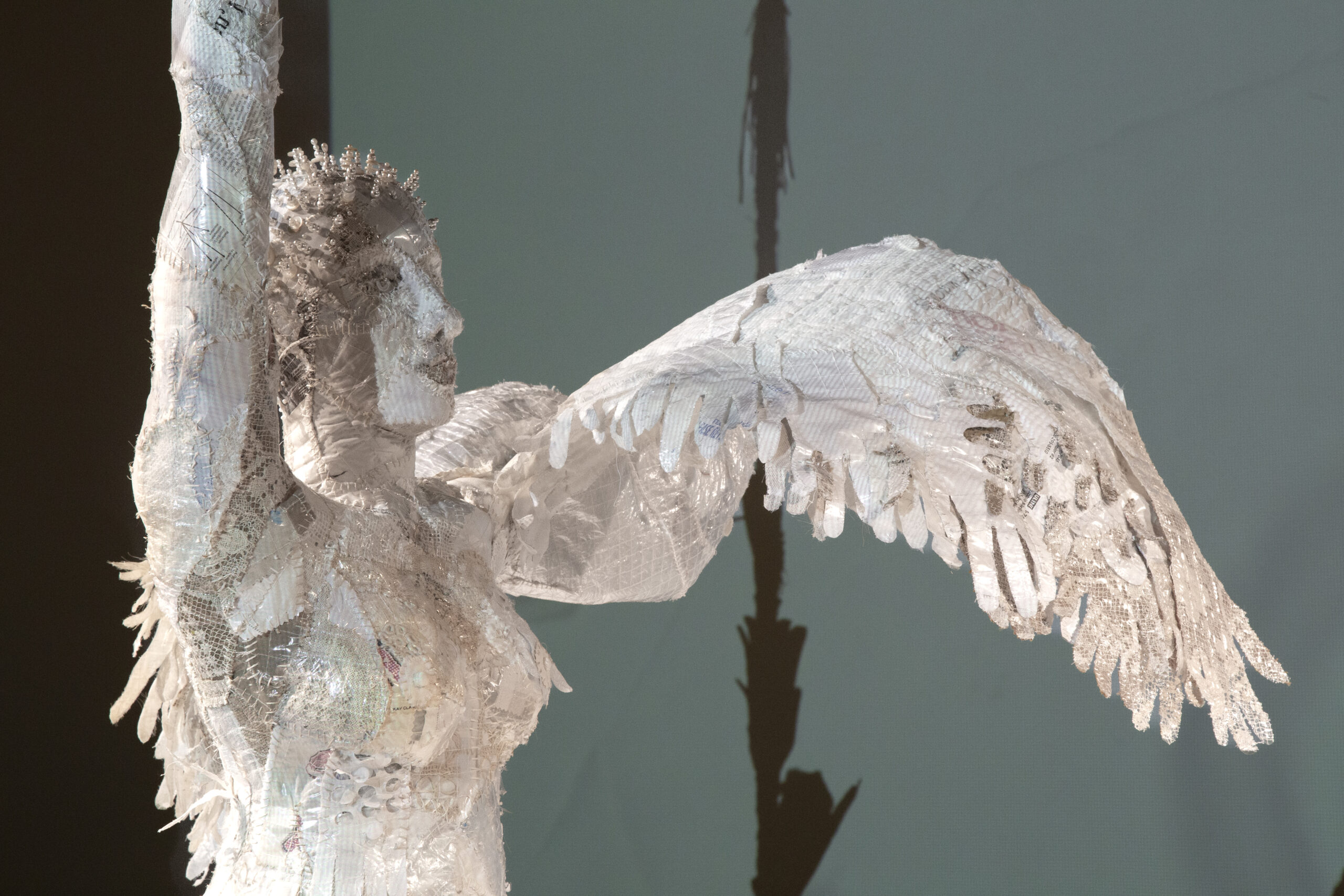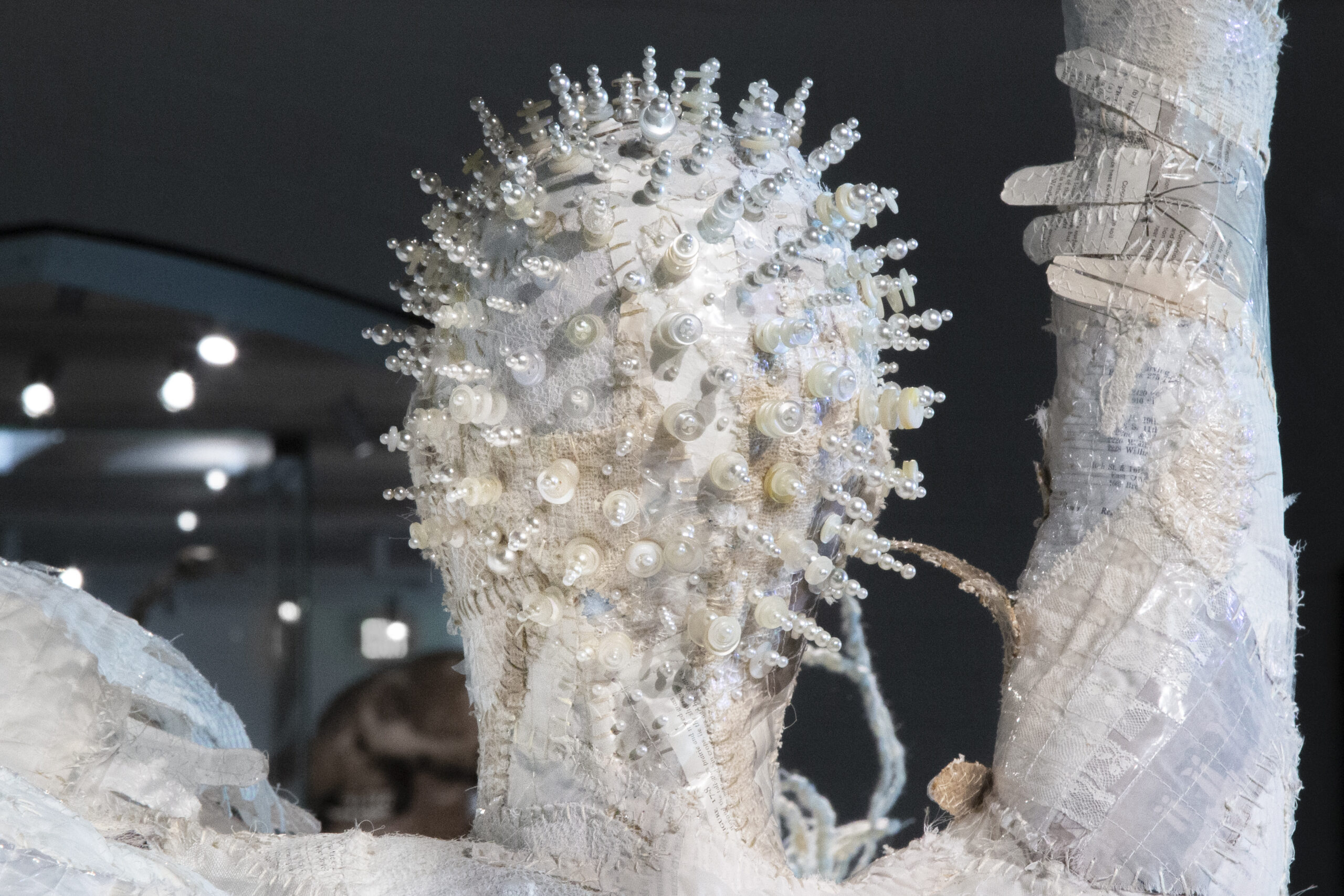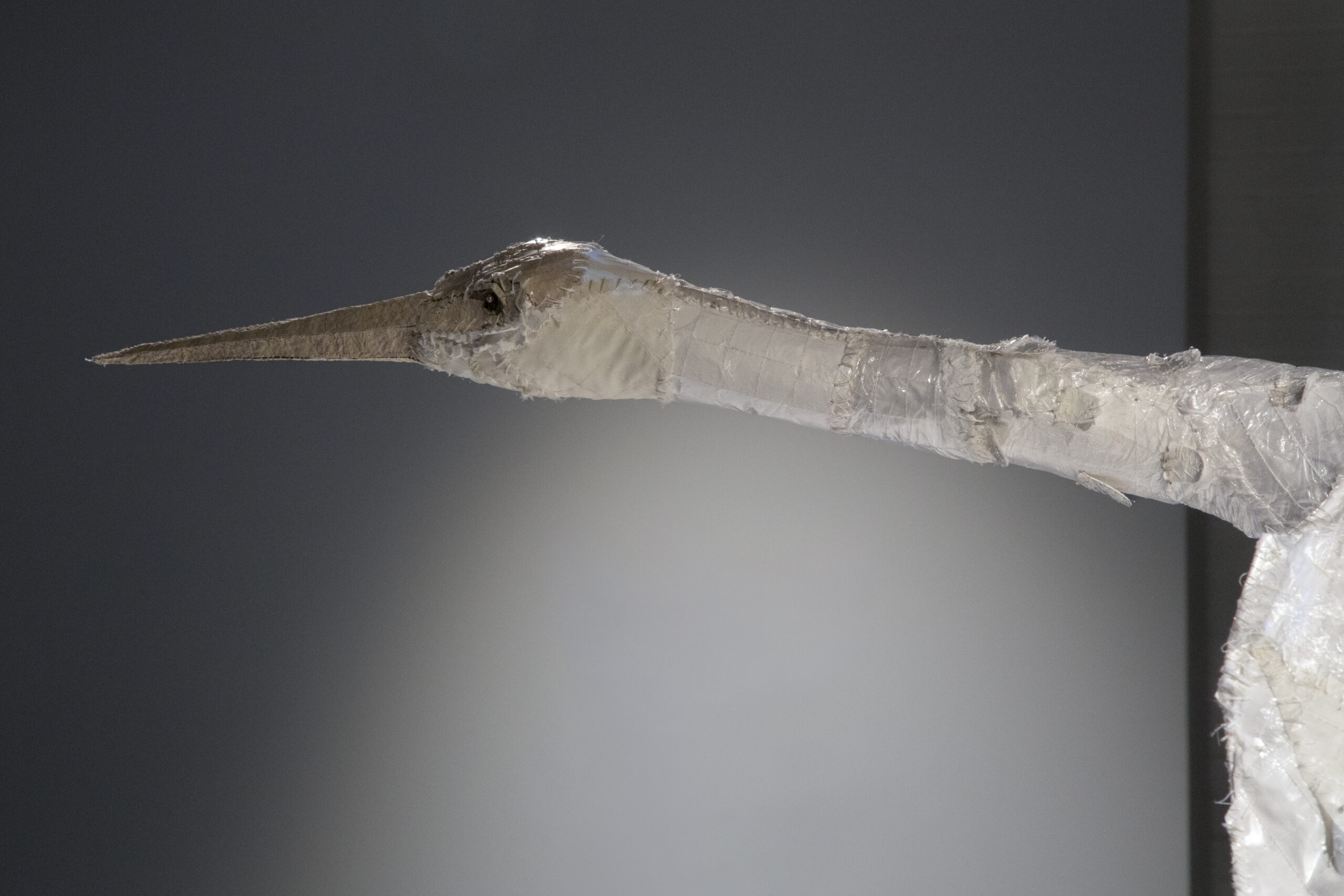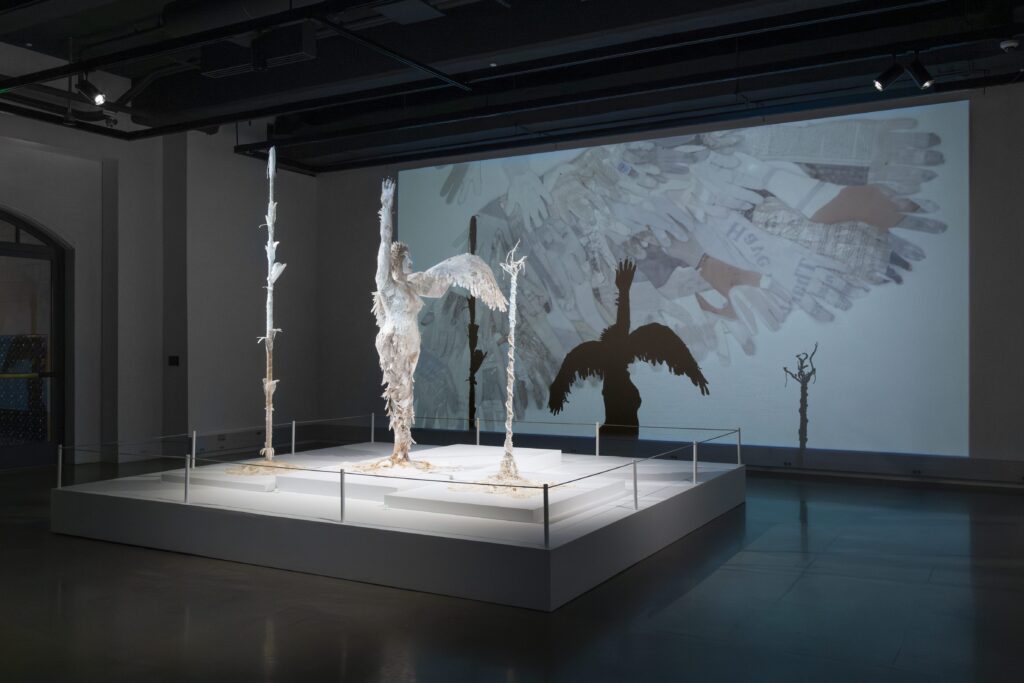
When interdisciplinary artist Kat Wiese watched a documentary about Sandhill cranes, she was struck by the similarities between their migratory patterns and the Great Migration of the 20th century, in which millions of southern Black Americans moved north to escape Jim Crow. Wiese, who grew up in Lincoln, Nebraska, and recently finished her MFA program at Yale School of Art, is part of that legacy: her great-grandfather moved to Detroit from Alabama to seek work, and a few decades later, in 1969, her grandparents and her mother moved to Nebraska. “I think of myself in this migration, too,” she says, “moving from Nebraska to Connecticut also for work and also for opportunity.” In her current sculpture exhibition at the Yale Peabody Museum, A Great Migration, she focuses on the connection between that 20th-century migration and the 500,000 Sandhill cranes that journey to Nebraska’s Platte River each year.
Wiese constructed each of the exhibition’s sculptures using found materials, such as leather gloves and lampshades, to resemble a winged female figure between cornstalks. She and her husband, along with Peabody visitors she recruited, traced their hands onto white lace, which she cut out and applied to the surface of each sculpture. “I’m from a predominantly white city in Lincoln, and [my] experiences of assimilation were formative in many ways,” she says. Similarly, the Sandhill cranes paint themselves when they arrive in Nebraska, dipping their beaks into iron-rich mud and covering themselves to blend in with the riverbeds. Both the cranes and Wiese’s sculptures are “camouflaging in this field space,” she says. “The symbolism of the glove and the hand tracing is a performance of putting on whiteness.” Wiese also notes that the cranes follow their family members as they fly north. “Why do we move?” she asks. “We move because we’re fleeing. We move because we’re pursuing. That tension between pleasure and survival in the work’s subject matter is one of the things that I love about it.”

